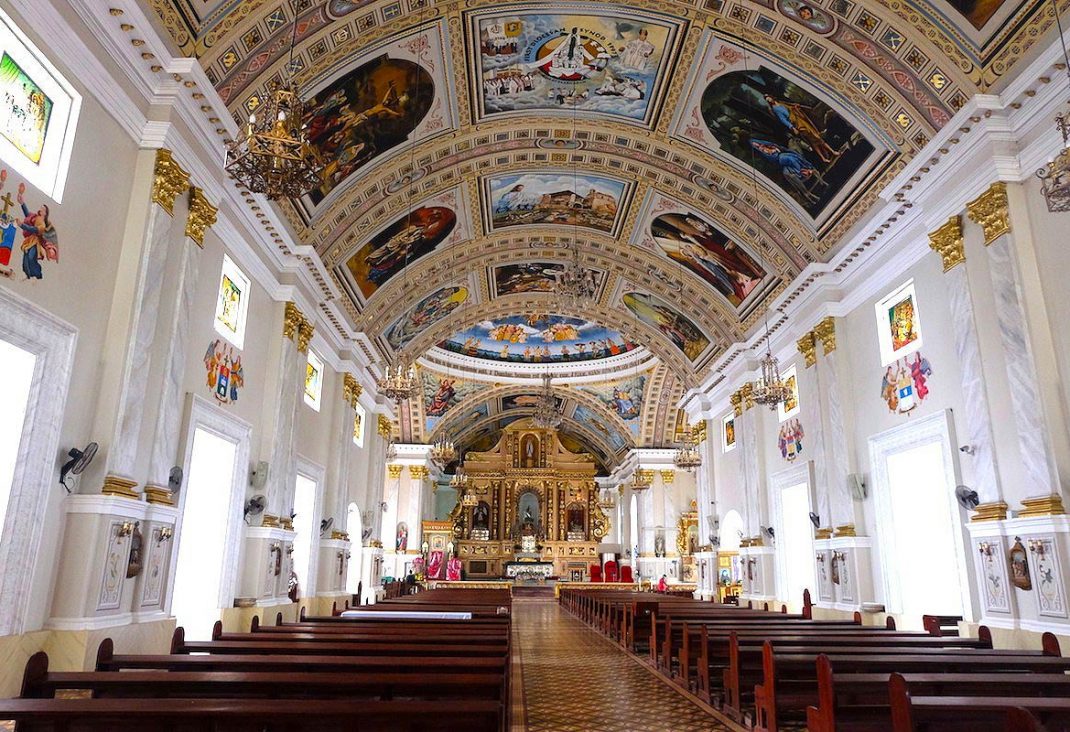Bohol is a paradise of many wonders. Aside from its iconic Chocolate Hills, many amazing beaches and other eco-tourism attractions, the island is also home to many historic churches that give Bohol an enchanting old-world charm. These centuries-old churches are not just important symbols of the Philippines’ colonial times but are also stunning works of architecture and design.
Here are some of Bohol’s heritage churches that you can visit for a glimpse of the island’s rich history and culture.
Baclayon Church
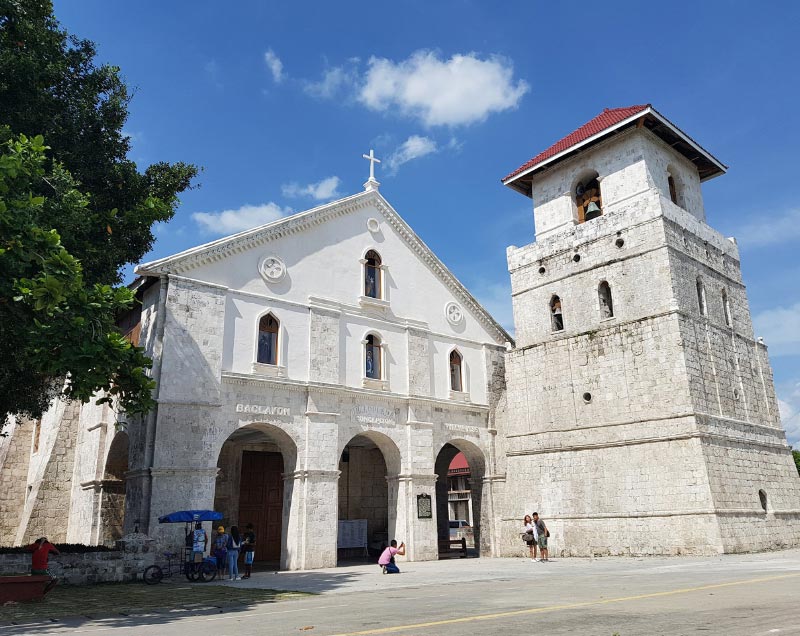
Photo: J. Balsamo via Twitter
The Immaculate Conception of the Virgin Mary Parish Church, more commonly known as Baclayon Church, was founded by Jesuit priests in 1596. Bohol’s oldest church, Baclayon Church was completed in 1727 and was restored in 2017 to fix the major damages that it took from an earthquake in 2013.
The church is a cross-shaped neoclassical marvel made of coral stones, with interesting décor such as paintings commissioned by Father Ubeda from the late 1850s, a baroque pulpit which was added in 1870s, and ceiling murals. Baclayon Church was declared a National Cultural Treasure and a National Historical Landmark.
Loboc Church
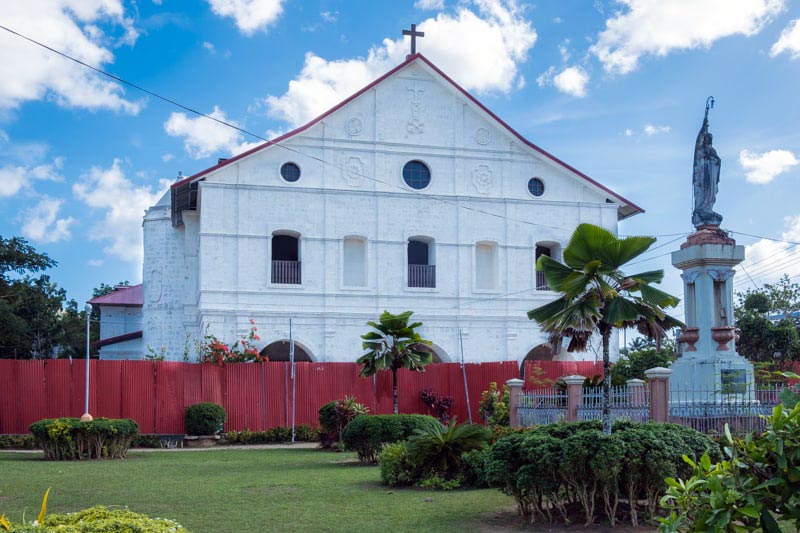
Photo: The Bamboo Traveler
The San Pedro Apostol Church is located in the municipality of Loboc which is why it is more commonly referred to as Loboc Church. The church was completed in 1734, making it the second oldest place of worship in Bohol. While the Jesuits founded Baclayon Church first, Loboc Church eventually became their mission center because of its strategic location.
Loboc Church has a Baroque architectural style and follows a cruciform plan. It is also recognized as a National Cultural Treasure and a National Historical Landmark of the Philippines. Heavily damaged by the earthquake in 2013, a portion of Loboc Church has collapsed but reconstruction efforts have been made to bring it back to its former glory.
Dauis Church
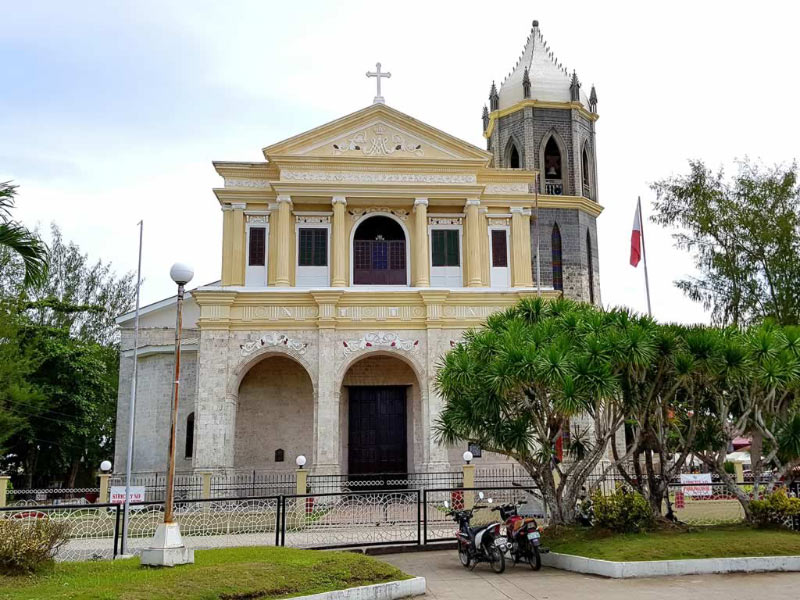
Photo: Bohol Life Tours
Also known as the Church of Our Lady of the Assumption, Dauis Church is another National Historical Landmark located in Dauis, a town in Panglao island. This historic church was finished in 1923 and was used as a shelter for nuns during World War II. While a portion of Dauis Church was damaged by the 2013 earthquake, it has then been restored in 2017.
Considered as one of the most sophisticated structures during its time, Dauis Church presents a stunning and intricate architectural design influenced by the styles of the Gothic era. Its interiors feature the image of Our Lady of the Assumption on the center altar, neoclassical niches, and a wooden pulpit with carvings.
Tagbilaran Church
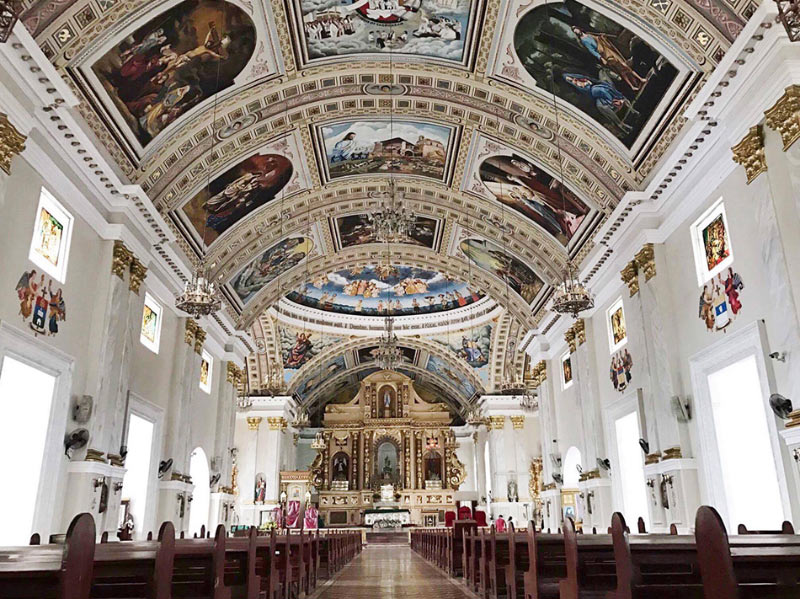
Photo: Abs-Cbn
The Cathedral of Saint Joseph the Worker, more popularly known as the Tagbilaran Church, was founded by the Jesuits in 1787 but its original structure burned down in 1798. The church was rebuilt during the late 1833 to 1835 and was later on turned into a cathedral, only leaving hints of its Spanish history.
The church has seen many renovations over the years. After its reconstruction, a two-story convent and bell tower were added and major overhauls were done on its façade, choir loft, walls, and ceiling. Despite all these changes, a few heritage features remain such as the sacred images that occupy its Baroque-style altars and retablos, Neo-Romanesque architectural style, and antique confessionals.
Dimiao Church
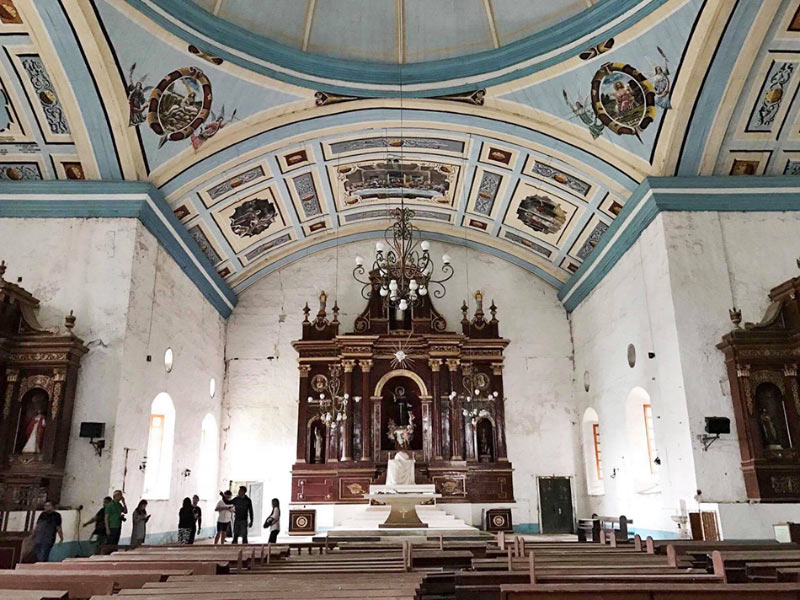
Photo: Abs-Cbn
The San Nicolas de Tolentino Church, or Dimiao Church as most people call it, is believed to have been built during the late 19th century. Surrounding the church is an Ermita (spanish for hermitage), where ruins of an old cemetery and mortuary chapels can be found. Just like the other select churches in Bohol, Dimiao Church, together with the Ermita Ruins inside its complex, was also declared a National Cultural Treasure by the National Museum.
Dimiao Church is one of the most well-preserved churches of Bohol. It has the same cruciform structure that most heritage churches in Bohol have. Its façade exudes a classical Neo-Baroque style, with twin bell towers on both its sides. The simplicity of its interiors has also been maintained to highlight the church’s Neoclassical altars.
Panglao Church
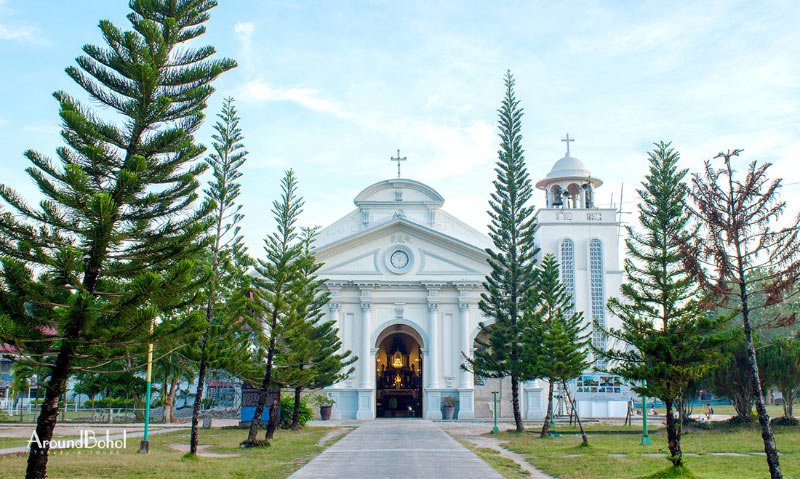
The Saint Augustine Church, also known as Panglao Church, is located in the southwest part of Panglao Island. The church’s construction started as early as 1894 but has experienced several delays, including the Philippine revolution against the Spaniards. It was finally completed in 1925 when the assigned parish priest, church leaders, town officials, and Panglao residents worked together to finish its construction.
There are many things that make this neoclassical church worth a visit. Its mesmerizing ceiling murals feature a depiction of the sacraments as well as the Holy Trinity surrounded by angels. Its pair of antique wooden confessionals are still being used up to this day. There are also the intricately carved retablos on the altar, including the image of their patron saint, St. Augustine.
Cortes Church
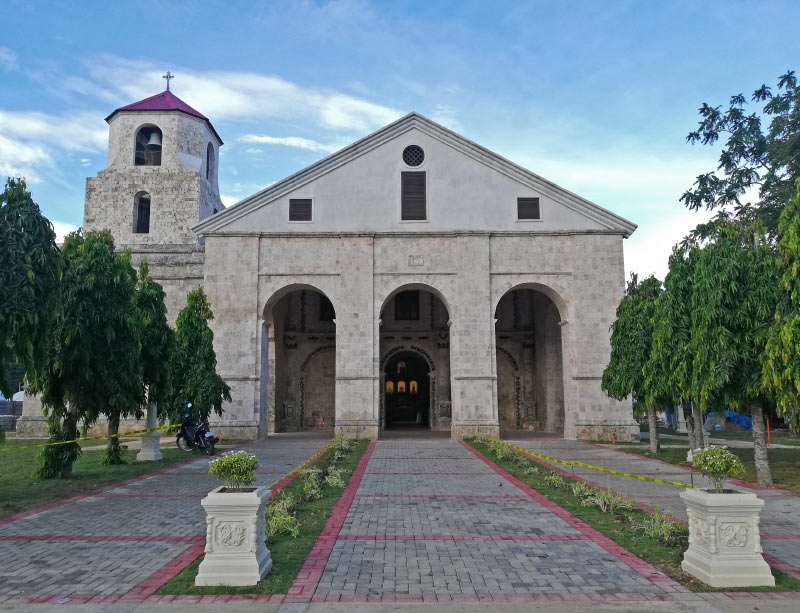
Photo: Inquirer
The Santo Niño Church, or Cortes Church, is believed to have been established around the 1890s, although the upper register of its bell tower was only completed during the 20th century. The church was also affected by the earthquake and had to close for restoration works. Cortes Church reopened last December 2019, 6 years after its closure.
While the Cortes Church has gone through major restoration projects, conscious efforts have been made to preserve the original grandeur of the old convent. The church’s white façade with three arched foyers was retained, and the well-preserved painting by Ray Francia which was commissioned during the early 1920s still graces the church’s ceiling.
Calape Church
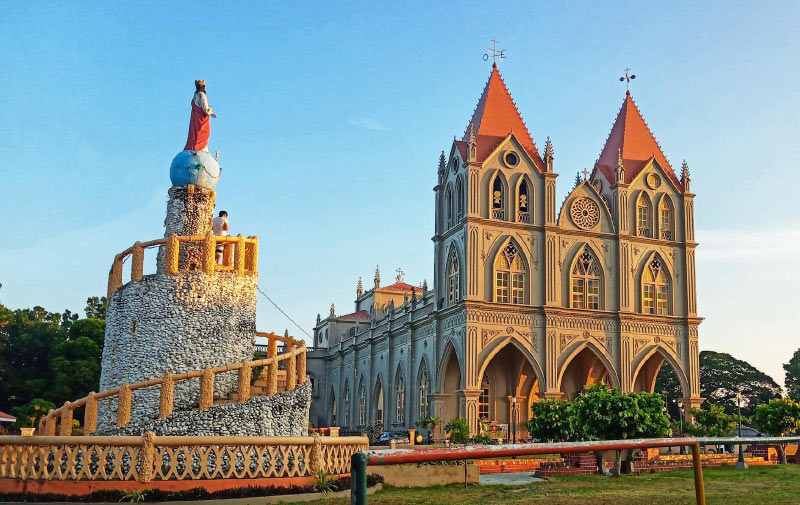
Photo: D’Rock Beach Resort
The San Vicente Ferrer Parish, usually called the Calape Church, is a Gothic-inspired wonder built by the Recollects. Its construction started in 1933 and was completed two decades later in 1954. The church also went under a major restoration project due to the earthquake, but its signature Gothic appeal has been kept.
Calape Church’s architectural beauty really sets it apart from the usual cruciform stone churches that one can find in Bohol. The church is described as an epitome of Bohol Gothic, adorned with Gothicizing features such as pointed arches, spires, rose windows, and crockets. The church also houses a historical bell that dates back to 1690.
Loay Church
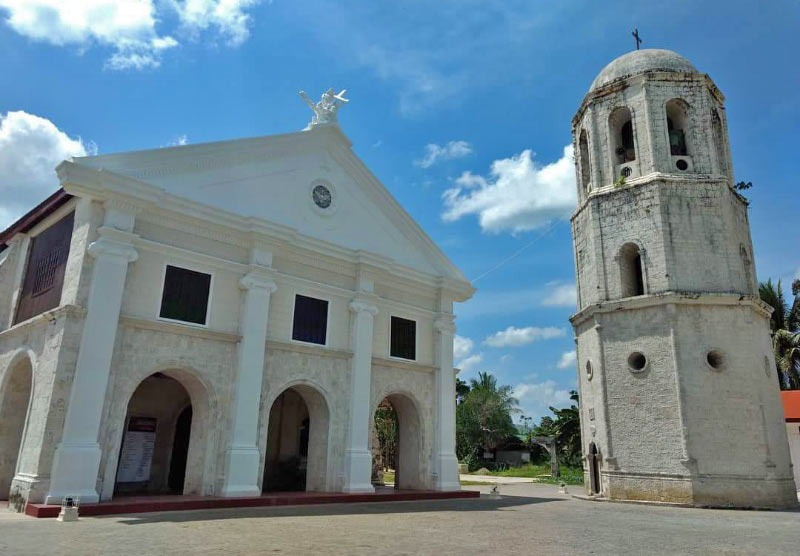
Photo: J. Balsamo via Twitter
The Holy Trinity Church or Loay Church stands on a plateau, facing the sea, and located near Loboc River’s mouth. Loay Church also has a bell tower, but unlike most churches, its bell tower is a separate structure built a few steps away from the church. Inside the church are Neoclassical altars, trompe-l’œil paintings, and artworks that depict Biblical scenes.
It was also one of the many Bohol churches that have successfully been restored after the devastating 2013 earthquake. The reconstruction project for Loay Church includes the restoration of its walls made of coral stones, portico renovation, and fixing or replacement of the church’s mouldings and ornaments.
Balilihan Church
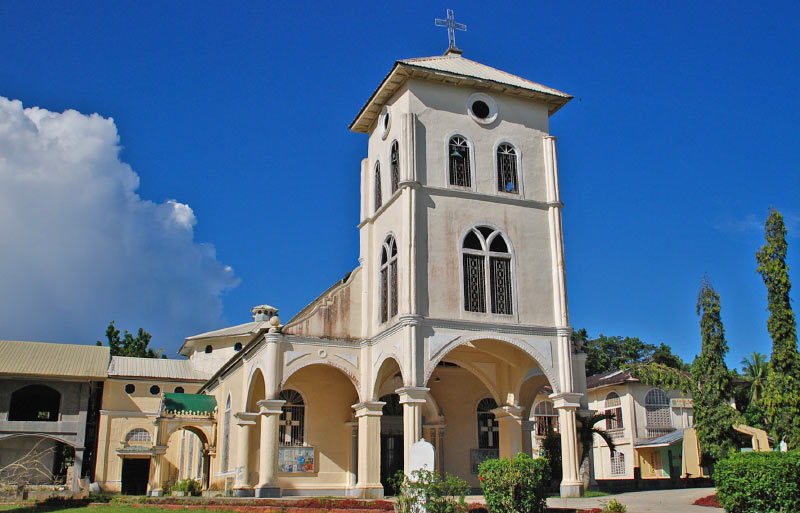
Photo: Carmel Academy via Facebook
The original Church of Our Lady of Mount Carmel, or simply called Balilihan Church, was a tabique and nipa structure was demolished by American Troops in 1889. The church was replaced by the present concrete structure we have now which was built during the early 20th century. Spared from devastation, the original four-storey bell tower located atop Mt. Carmel Hill can also still be reached through a flight of concrete stairs.
Balilihan Church has the usual cruciform plan and features a nave divided by three aisles, a portico and a bell tower in front of the façade. A squat octagonal cupola also adorns the church’s roof. The church’s interior is embellished with paintings by Ray Francia, and its altars combine different architectural styles, featuring Corinthian columns, Neo-Gothic spires and crockets, Baroque volutes, and Art Deco openwork.
Featured photo: Tagbilaran Church from Out of Town Blog

